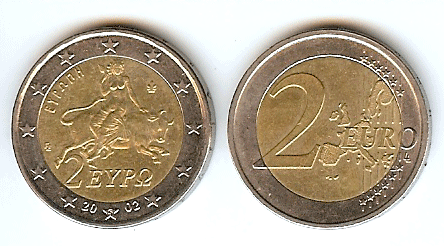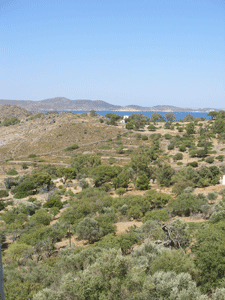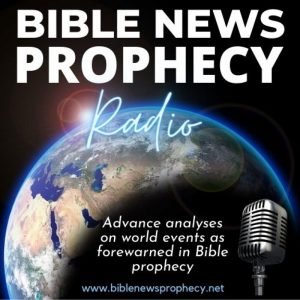By COGwriter
This morning I noticed that Gavin Rumney of the anti-COG Ambassador Watch website included the following in his post:
Even more basic is the assumption that Genesis relates real history. Was there truly a garden called Eden in prehistory, a place which we might find if we had H. G. Wells’ Time Machine at our disposal, or are we dealing with another genre altogether? Is the reason why temple symbolism exists in Genesis a wonderful prefiguring of what was yet far in the future, or an indication that the real authors wrote at a time when the Temple stood in Jerusalem, and that they retrojected that symbolism back on the mythical past? To suggest that some kind of Nazarite vow was operative in Adam’s lifetime seems to me to risk making a case based on an obvious anachronism.
Many at the anti-COG sites are atheists, and nearly all discount all or parts of the Bible (and I am only saying “nearly” all because for some reason, some who claim to be in the COG sometimes post at those sites).
Those who have questions about the Bible should read the LCG booklet by Dr. Winnail titled The Bible: Fact or Fiction?
We in the COGs do accept that Genesis is valid historically. Furthermore, the Chinese have apparently retained knowledge of parts of the early accounts in Genesis in their writing. And, they did this, not only before there was a temple in Jerusalem (which did not occur until Solomon’s time), but even before God had Moses write the Book of Genesis.
Chinese characters are essentially the symbolic representation of words. It is my understanding that both the Chinese and Japanese languages share some of the same characters, and though they pronounce the words differently, thus a few of the characters have the same meaning in Japanese as they do in Chinese. There are over 600 symbols Chinese characters, and although some were changed in the 20th century, most still are essentially the same as they were thousands of years ago. (Now since I do not read Chinese, or Japanese, I am relying exclusively on the works of others–most heavily from Kees Noorlander from http://www.morgenster.org/signs.htm from which this portion of this paper is indebted to, plus a little bit from Babel Fish by Alta Vista, and quite a bit from http://www.zhongwen.com/ and from the book The Discovery of Genesis). It should be noted that in the 1950s China nearly decided to abolish characters and even now most Chinese are not taught the history and tradition behind their writing system.
Anyway, since the characters had to start from somewhere (and biblically they would have started sometime after the construction of the tower of Babel), some have suggested that perhaps these characters help demonstrate that the Chinese characters (and Japanese for that matter) demonstrate that they were familiar with some of the events recorded in the first chapters of the Book of Genesis.
For example, the Book of Genesis records:
The LORD God planted a garden eastward in Eden…The tree of life was also in the midst of the garden…Now a river went out of Eden to water the garden, and from there it parted and became four riverheads. (Genesis 2:8,9, 10).
The term English term garden can be represented by the Chinese word tièn (also spelled tián). The Chinese symbol for it is four irrigation channels within an area of land. Or it possibly may be the four rivers with a type of tree in the middle of it.
Was that symbol influenced by the events recorded in the Bible or is this a coincidence?
It is difficult to know for certain as there are other Chinese symbols that can be used instead for garden.
However, there are several other characters to explore.
There were two famous trees in the Garden of Eden:
The tree of life was also in the midst of the garden, and the tree of the knowledge of good and evil. (Genesis 2:9).
Recall that God gave Adam one command after placing him in the garden:
Then the LORD God took the man and put him in the garden of Eden to tend and keep it. And the LORD God commanded the man, saying, “Of every tree of the garden you may freely eat; but of the tree of the knowledge of good and evil you shall not eat, for in the day that you eat of it you shall surely die.” (Gen 2:15-17).
It is of interest to note that a Chinese symbol for Prohibition is the combination of the symbols for two trees (mù) and command:
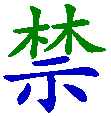 |
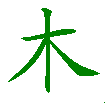 |
 |
Prohibition
To Prohibit |
= Tree |
+ (Divine) Command |
It should be noted that God, while He originally prohibited one tree, later prohibited access to the second tree (see Genesis 3:22-24).
In Genesis Eve stated:
We may eat the fruit of the trees of the garden (Genesis 3:2).
It is also of interest to note that the Chinese symbol for Fruit is the combination of the symbols for tree and garden:
While Adam and Eve were in the garden, the devil decided to implement his plan to alienate humans from God. His plan was to suggest that God withheld secret information for the humans in the garden.
Now the serpent was more cunning than any beast of the field which the LORD God had made. And he said to the woman, “Has God indeed said, ‘You shall not eat of every tree of the garden’?” And the woman said to the serpent, “We may eat the fruit of the trees of the garden; but of the fruit of the tree which is in the midst of the garden, God has said, ‘You shall not eat it, nor shall you touch it, lest you die.’ ” Then the serpent said to the woman, “You will not surely die. For God knows that in the day you eat of it your eyes will be opened, and you will be like God, knowing good and evil.” (Genesis 3:1-5).
Notice that the Chinese symbol for Devil is composed of the characters for secret, person, and garden:
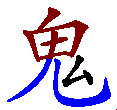 |
 |
 |
 |
| Devil |
= Secret |
+ Person |
+ Garden |
Sadly, Eve seemed to believe the devil as she desired to benefit from the fruit of the tree that was prohibited:
So when the woman saw that the tree was good for food, that it was pleasant to the eyes, and a tree desirable to make one wise, she took of its fruit and ate (Genesis 3:6).
God decided later to prohibit the second tree lest Eve and others desired it so much that they would go for it as well (see Genesis 3:22-24).
Notice the symbol for the Chinese word lán for desire or greed is a combination of the symbols for woman and two trees:
 |
 |
 |
Desire,
Greed |
= Woman |
+ Trees |
After succumbing to temptation, humans noticed that they were naked:
Then the eyes of both of them were opened, and they knew that they were naked; and they sewed fig leaves together and made themselves coverings. (Genesis 3:7).
Notice that the Chinese symbol for being naked has to do with clothing, one tree (the one that Adam and Eve were originally told not to eat from perhaps), and a garden with four irrigation canals:
 |
 |
 |
 |
| Naked |
= Clothing |
+ Tree |
+ Garden |
After Adam and Eve were expelled from the garden they had children. On of their sons was Abel, who raised and sacrificed sheep:
Now Abel was a keeper of sheep…Abel also brought of the firstborn of his flock and of their fat. And the LORD respected Abel and his offering (Genesis 4:2,4).
Notice what a Chinese character meaning righteous is made of:
 |
 |
 |
 |
| Righteous(ness) |
= Sheep |
+ Hand |
+ Lance |
Interestingly, the New Testament account of Abel refers to:
…the blood of righteous Abel (Matthew 23:35).
Notice how the Chinese symbol agrees with the New Testament account that essentially the sacrifice of sheep (by Abel, for example) was righteous.
Since Christ was our Passover lamb sacrificed us, and that through Him we attain righteousness at least one has speculated that perhaps that is why the following symbol for righteousness was somehow chosen (since the combination of the symbol for hand and lance can mean us):
 |
 |
 |
| Righteous(ness) |
= Sheep |
+ I, Us |
And while it is NOT likely that this was determined by the Chinese after Jesus’ crucifixion, it is a fact that Abel and Noah, who the Bible calls righteous, sacrificed clean animals such as sheep.
Many know that Chinese history contains an account of some type of worldwide flood. There may be a couple of aspects of it preserved in its characters.
Notice a couple of statements in the Bible concerning the flood:
Then the LORD said to Noah, “Come into the ark, you and all your household, because I have seen that you are righteous before Me in this generation. (Genesis 7:1).
…in the days of Noah, while the ark was being prepared, in which a few, that is, eight souls, were saved through water (1 Peter 3:20).
A Chinese word chuán for a type of boat is:
 |
 |
 |
 |
| Boat |
= 8 |
+ Mouth |
+ Little Boat,
Vessel |
It may be of interest to note that one of the Chinese symbols for flood (chong) is a combination of an inverted symbol meaning “first Earthly branch” and eight (the term for eight may instead mean “person remaining””–that of itself is interesting as that the symbol for eight and “person remaining” look about the same–recall that on the ark there were only eight persons remaining alive).
After the flood, humans stayed together and built a tower:
Now the whole earth had one language and one speech. And it came to pass, as they journeyed from the east, that they found a plain in the land of Shinar, and they dwelt there. Then they said to one another, “Come, let us make bricks and bake them thoroughly.” They had brick for stone, and they had asphalt for mortar. And they said, “Come, let us build ourselves a city, and a tower whose top is in the heavens; let us make a name for ourselves, lest we be scattered abroad over the face of the whole earth.” (Genesis 11:1-4).
But God did not care for this:
But the LORD came down to see the city and the tower which the sons of men had built. And the LORD said, “Indeed the people are one and they all have one language, and this is what they begin to do; now nothing that they propose to do will be withheld from them. Come, let Us go down and there confuse their language, that they may not understand one another’s speech.” (Genesis 11:5-7).
It is highly likely that when people saw others speaking foreign languages, that they thought that somehow something at this tower affected their mouths. Notice the following Chinese symbol of a tower.
 |
 |
 |
 |
 |
 |
| Tower |
= Grass |
+ Clay |
+ Mankind |
+ 1 |
+ Mouth |
The tower of Babel was built with bricks (grass and clay) and humans originally had one language (or mouth). It is possible that this symbol is showing that the ancient Chinese recognized a connection to the biblical tower of Babel.
The Bible shows that after God confused the languages in Babel that He scattered humans all over:
So the LORD scattered them abroad from there over the face of all the earth, and they ceased building the city. Therefore its name is called Babel, because there the LORD confused the language of all the earth; and from there the LORD scattered them abroad over the face of all the earth (Genesis 11:8-9).
The Bible also mentions:
To Eber were born two sons: the name of one was Peleg, for in his days the earth was divided; and his brother’s name was Joktan (Genesis 10:25).
Now whether it was just the scattering of humans that occurred in Peleg’s time, or that the earth had continental divisions at that time is not completely clear. What is clear, however, is that humans did separate essentially by language and ethnicity thousands of years ago.
Notice that:
…the ancient Chinese people were quite familiar with the same record which the Hebrew Moses is popularly given credit for writing some 700 to 1,000 years later. Imagine this information being stored in special characters that were in use hundreds of years before the first page of the Bible was written! (Kang C.H., Nelson E.R. The Discovery of Genesis: How the Truths of Genesis Were Found Hidden in the Chinese Language. Concordia Publishing House, St. Louis, 1979, p. 5)
Notice that the development of Chinese characters predates the writing of the Book of Genesis. Thus, the Chinese characters seem to provide an ‘independent’ account that verifies portions of the accounts in Genesis.
Continuing, the authors of the previous citation go so far as to state:
Moreover we believe that the Chinese actually employed this historical knowledge as one small facet in the process of building their written language. The significance of this claim is broad. But most important, it appears to us to give support and added acceptance of the much slandered account of Biblical Genesis (Ibid).
Thus, the existence of these Chinese characters should be a comfort to the Chinese that their ancestors did have some type of biblical witness, as well as the modern believers that even in a land as removed as it is from the Middle East, the Chinese did know about various portions of the Genesis account. And since their characters were developed prior to Moses writing Genesis, their very existence provides additional verification that the events were known for many thousands of years.
But apparently, some of those against the Churches of God have other views.
Several articles of possibly related interest may include:
Is God’s Existence Logical? Some say it is not logical to believe in God. Is that true?
Is Evolution Probable or Impossible or Is God’s Existence Logical? Part II This short article clearly answers what ‘pseudo-scientists’ refuse to acknowledge.
Where Did God Come From? Any ideas? And how has God been able to exist?
What is the Meaning of Life? Who does God say is happy? What is your ultimate destiny? Do you really know?
The Bible: Fact or Fiction? This is a booklet written by Douglas Winnail that answers if the Bible is just a collection of myths and legends or the inspired word of God.
Read the Bible Christians should read the Bible. This article gives some rationale for regular bible reading.
What is the Appropriate Form of Biblical Interpretation? Should the Bible be literally understood? What do the writings of the Bible, Origen, Herbert Armstrong, and Augustine show?
Bible and Historical Resources on the Internet Electronic bibles, Two Babylons, early Christian literature, photos, and even links to old Herbert W. Armstrong materials.
China, Its Biblical Past and Future, Part 1: Genesis and Chinese Characters This article provides information showing that the Chinese peoples must have known about various accounts in the Book of Genesis up until their dispersion after the Tower of Babel.
China, Its Biblical Past and Future, Part 2: The Sabbath and Some of God’s Witness in China When did Christianity first come to China? And is there early evidence that they observed the seventh day sabbath?
China, Its Biblical Past and Future, Part 3: China in Prophecy What is Ahead for China? What will happen to nearly all the Chinese?
Japan, Its Biblical Past and Future, Part 1: Any Witness? This is a draft of an in-process article about Japan. Have they had any witness?
Japan, Its Biblical Past and Future, Part 2: Prophecy Japan in prophecy. What is prophesied for Japan. Will God save the Japanese?



























